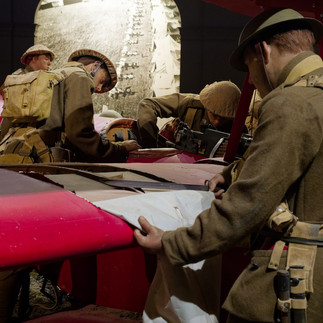Omaka Aviation Heritage Centre
- Robin Nichols

- Oct 15
- 3 min read

Housed next to a small airfield in Omaka, near Blenheim, you'll find an extraordinary aircraft museum. In it you'll find some of the best preserved aircraft from WWI and WWII, many displayed in stunningly realistic tableaux relating the unbelievable stories of survival and lost against all odds. The museum is divided into two parts: WWI and WWII. Both have a huge range of memorabilia alongside the planes. Some aircraft are as they were found decades ago while others had been sitting in scrapyards, warehouses or the jungle for decades before being lovingly restored to their original status.














































Comments